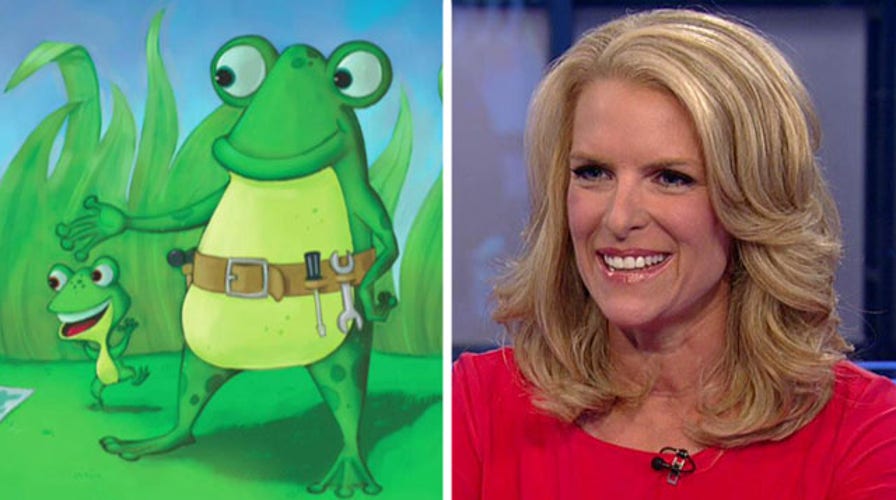I was excited to publish my new children’s book “Freddy the Frogcaster” in September. The book is about a little frog who loves weather. And he doesn’t just love the warm sunny days, but also ones that are cloudy with rain.
He likes to figure out how far away a thunderstorm is by how many seconds he can count between the flash of lightning and the clap of thunder. By studying the clouds above him, the wind direction, temperature and barometric pressure he can tell what kind of weather might be on the horizon.
Freddy’s parents encourage his love of weather by giving him books to study, and tools to use like a thermometer, barometer, rain gages and wind anemometers. One day, his dad even builds him a backyard weather station to collect all of his data and gather “clues” to help him chart his forecasts.
[pullquote]
I won’t give away the story but basically, Freddy is so good with his “frogcasting” abilities that he helps his town figure out what to do when bad weather could ruin their fall picnic.
I got the idea to write the book, in part, because as a certified meteorologist I have often been asked by friends and colleagues for recommendations on kid’s weather books.
A lot of them are scientific and hard to understand. A few of them were too basic.
I wondered why there weren’t any cute stories that introduced meteorology to kids with weather terms like “cold front, warm front, high pressure and low pressure” that was fun and easy to understand? Then I thought, hmm…maybe this is something I could write?
As a parent of two kids, I notice their inquisitive “nature” when it comes to understand Mother Nature. My 4-year-old Matthew is fascinated by weather. He was in the tub one day – took a washcloth in his hand, squeezed it so the water came out and declared it “a cloud!” That’s my boy!
Weather is something that affects all of us. It dictates our wardrobe, sometimes affects our moods. It can bring us together as a community.
Some of my fondest memories as a kid were breaking out the sled when the snow piled up. My dad would pull my brother and I through the neighborhood with our big snowsuits marveling at this winter wonderland that covered the ground in a white blanket.
We helped each other plow and shovel driveways.
When terrible weather can strike a town or city, that’s when people also lend a hand to help their neighbors.
As adults, we can understand what has happened, but how do we explain to our kids why bad weather brought a tree down onto someone’s roof or backyard? Or why the rainwater piled up in the basement and the electricity is out.
Sometimes as parents, we don’t know how to talk to our kids about things like thunderstorms. It’s easy to say “God is moving furniture or God is bowling upstairs…” but how about a real explanation like: a thunderstorm is a storm that brings lightning and thunder.
Sometimes fierce winds, and heavy rain come with bad weather, but we usually have warnings or clues to help us predict when a bad storm is going to come through, so people can make sure they are safe and away from danger.
If kids have an early curiosity in weather, it could also help them in their math and science studies in school; perhaps even inspiring the next generation of forecasters or meteorologists.
I think it was Mark Twain who once said: “Everyone talks about the weather, but no one ever does anything about it.”
Well, perhaps if we encourage our kids to keep an eye on the sky, and help them understand it a little better, we are “doing something about it!”
If you’d like a few more ideas on how to encourage future “frogcasters” in your family, here are a few ideas:
Encourage your kids to describe the weather they are experiencing on a day-to-day basis.
- Take the outside temperature.
- Look Up: What does the sky look like?
- Notice the clouds. Are there any clues outside that might point to some weather changes?
- Keep track of their observations in a little weather journal (temperature, barometric pressure, wind direction) Do your children notice any weather patterns?
- As our seasons change, explain to your children why they have to wear warmer clothing now. What do we wear when it’s fall/winter/spring/summer.
- Watch the local weather forecasts with them, and decide together what they should wear to school that day.
You can also visit a Freddy “activities” page here to download some free activities, weather experiments that you can do with your budding weathercaster!

